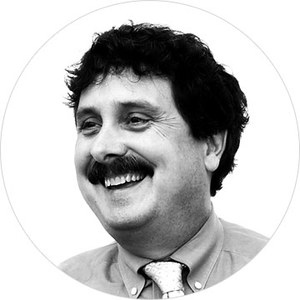The Art of the Interview: What Works — and What Doesn’t
// By Marcia Simon, APR //
 It’s hard to imagine that a renowned surgeon or C-suite executive has insecurities, but when it comes to being in front of a video camera — or any type of media — people are people. And some are just not comfortable in that environment.
It’s hard to imagine that a renowned surgeon or C-suite executive has insecurities, but when it comes to being in front of a video camera — or any type of media — people are people. And some are just not comfortable in that environment.
As an interviewer, it’s your job to assess the situation and make sure the person you’re talking with feels comfortable and relaxed, so all goes smoothly as planned.

Dan Dunlop, president, Jennings Healthcare Marketing
Whether a mock interview to coach a new chief medical officer for his or her first TV appearance, or extracting new information from your CEO on a sensitive community issue so you can draft an op-ed piece, you’ll get more compelling content when you approach “the interview” as a conversation. You want your staffer to shine. Maybe it’s a new physician you want to feature in an upcoming newsletter, or on your hospital’s website or intranet.
We spoke with Dan Dunlop, president of Jennings Healthcare Marketing in Chapel Hill, North Carolina, who has conducted more than 300 interviews. Dan knows what works and what doesn’t. With this in mind, we talked about common-sense approaches to interviewing that even the most experienced professionals may overlook when the production schedule falls in the middle of a busy day. Dan also shared some of his most effective tips when it comes to getting dynamic sound bites and content from thought leaders within your organization.
The Overprepared Subject
When discussing a specific issue that requires a reference to an incident or data, by all means, let the person know about this ahead of time so he or she can bring any reference documents. But “remind your subject not to try to memorize any lines or messages. Especially on video, it comes across as artificial, not conversational,” says Dunlop.
“A friendly conversation while you’re getting ready helps to put the person at ease. You only get good, meaningful content if you get the person to relax.”
For professionals who have spent a lot of time in academia, reviewing notes and doing “homework” seem like natural ways to prepare, but Dunlop says that “giving someone questions in advance does not relax them. These are brilliant people. The audience wants to hear what they are passionate about. They don’t need to prepare when it comes to something they do in their specialty. They know the material. They talk with their colleagues about it, so have a conversation in the same way. He suggests putting them at ease by warming up with a couple of easy questions before getting started. “A friendly conversation while you’re getting ready helps to put the person at ease. You only get good, meaningful content if you get the person to relax,” says Dunlop.
Get the Ball – or Camera – Rolling
The way you conduct yourself is so important to the final product, Dunlop points out, so ask questions in a way that makes it easy for the subject to give you a down-to-earth response, and then LISTEN to the answer. It sounds like the obvious thing to do, but interviewers sometimes start to think ahead to the next question when they should be actively listening to the answer at hand. This is where an inexperienced interviewer often loses the flow of conversation. Active listening gives you the opportunity to learn about something very interesting that may not have been on your radar going into the chat.
“The best content comes from the follow-up questions,” says Dunlop. “If you’re just reading questions off your list, you may miss the opportunity to go deeper into the subject,” Dunlop explains. These unplanned verbal adventures often give you the quotes that make your final product stand out from others.
The “Worst Interview Ever” Turns to Gold
It’s surprising to learn that even highly acclaimed surgeons and specialists can have doubts about their ability to perform well on camera, but it happens.
“We had a pediatrician who came in convinced that the interview would be horrible. She had very little confidence in her ability to communicate well on camera. It took a lot to make her feel comfortable, but by the end she was laughing, telling great stories with very relatable metaphors, and when she saw the final product, she was surprised by what a great job she did,” Dunlop recalls.
The point is that it’s the interviewer’s job to get the conversation going.
“Nothing replaces the impact of seeing the message, and that’s why it’s so important to put that person at ease when shooting the video.”
Dan’s Tips and Tricks
Explain the ground rules upfront, letting the subject know you may be interrupting if a do-over is necessary. This may because of a grammatical error, a sneeze or cough, or language that uses terminology the audience may not understand.
When a physician answers in a way that sounds way too clinical for a consumer/patient audience, stop and explain the need to say it differently. But if the content is intended for a professional or peer audience, remember that the message may be impactful even if you don’t quite understand it. In this case, let the subject finish the thought, then ask the question again, pointing out the need to answer in simplified language. This gives you an alternative version when it comes time to edit.
If you’ve strayed from your list of questions, review them at the end to make sure you’ve gathered all the answers you need.
By the end of the interview, the subject has usually relaxed, so ask the first question again. The answer may sound different, and better suited to the content you’re after.
“The best content comes from the follow-up questions.”
Taking It to the Street
Sometimes, it’s worthwhile to brainstorm with a creative team to see if you really need to do a standard interview at all.
In one example, Dunlop’s objective was to promote the launch of Lawrence General Hospital’s new heart and vascular center. Having timely screenings for cardiovascular and peripheral artery disease was an important message. The routine approach would be to identify the center’s spokespeople, prep them for interviews, and use the content as described above in the article. But instead of putting the doctors on camera, the marketing team decided to do short interviews with consumers instead.
“We went out on the street and walked up to people, asking what they know about cardiovascular health. We tested the notion about how little knowledge there is. As we talked, hospital professionals educated people about the importance of having a heart and vascular assessment, especially if you are at high risk, and how to know if you are,” Dunlop explained. “People were so appreciative for the information. They gave us permission to use their interviews on social media and the hospital’s website.” It became clear that many people know very little about heart and vascular health and that the new center would be a valuable addition to the community.
Giving Legs to the Content
Taking the time to hone your interview skills is an investment that pays off. Great content can be used in multiple ways. Powerful quotes make shareable posts for Instagram or Facebook. Use the new content to freshen up newsletters and websites, or to create a news release. Dunlop may take the audio from a video interview and turn it into a podcast. In addition, video snippets can be used in social media.
Dunlop points out that video is an essential element of any content marketing program. “Nothing replaces the impact of seeing the message, and that’s why it’s so important to put that person at ease when shooting video,” he says. There are times when Dunlop’s team may be shooting 12 physicians in a day with a strict schedule to follow. Hair and makeup people add to the crew, along with a still photographer and lighting technician.
“We need to be really nimble, and the team needs to work in a manner that contributes to a relaxed session,” Dunlop says. While an experienced production crew helps to make sure that all the technical aspects go off without a hitch, it’s up to the interviewer to establish the tone and comfort level that shows your hospital or health network’s professionals in a down-to-earth way that promotes the warmth, compassion, and excellence that patients and families expect from their healthcare providers.
Marcia Simon, APR, writes about healthcare, connected health, and wellness. As principal of MSE Public Relations, she manages content, strategic communication, and media relations for clients in the field of health. Email her at marcia@mseusa.com or visit LinkedIn.com/in/marciasimon.

